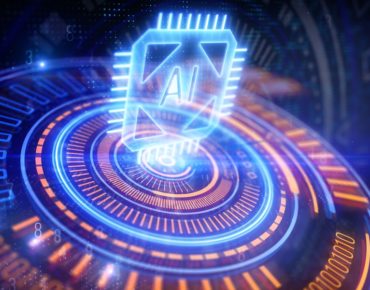To Sell More Hardware, Chipmakers Step up to Make AI Straightforward

Hardware makers have spent years and billions of dollars building up wares for AI, but are now asking themselves: how do we make AI straightforward for small and large companies?
Chipmakers Intel and Nvidia realize their AI hardware will sell only if it provides self-starter kits for companies to get familiar with AI. For that, both companies released AI kits that companies can easily deploy to measure the benefits of AI.
"AI is evolving. I think we all understand we have a common goal here, which is for AI to be as broad as possible," said Wei Li, vice president and general manager of AI and analytics, in a chat with EnterpriseAI.
Intel this week released AI inferencing kits for verticals to deploy AI inference models to generate the fastest results from available hardware resources. The AI kits use a low-code approach and can be deployed with zero-to-minimal knowledge of programming .
"If you try to do this today, it's not very straightforward. You have to find the right software, the right AI model, the right data set, all these things require skill sets, require training people who understand AI," Li said.
Similarly, Nvidia last month released the TAO starter kit – which stands for Train, Adapt and Optimize – to create AI models for speech and vision recognition without prior knowledge of programming or machine learning.
The chipmakers are trying to evolve to more of a click-and-run approach for AI versus a command-line way to execute applications.
There are many barriers to the wider adoption of AI, Wei said. Today, AI is largely in the hands of large cloud service providers, which have huge amounts of data. Customers have their own data, which may or may not be amenable for AI. The companies also don't know how to transform the data into insight.
"There's a huge gap between a researcher demonstrating recognizing cats and dogs, and an enterprise that can actually go from data to insight," Li said, adding that Intel's reference kits are intended to cut the hype of AI and turn it into reality.
"Everybody's heard about AI as a potential, they invest in it. Quite often, they don't see the immediate return from AI. So that's the problem we're trying to solve here," Li said.
The toolkits offered by Intel and Nvidia address the first-mile problem of AI, which is programming and fine-tuning AI to harness the computing power available. The Intel toolkit provides a baseline implementation of a particular AI application that covers the entire pipeline of a deployment, which includes the code, the instructions and data.
At the top layer of the reference kits is the code from libraries such as PyTorch, under which there are calls to OneAPI neural network libraries which are optimized for different chip architectures and matrix operations on CPUs, GPUs and other processors.
"This is how the architecture is working – ideally, the AI developers, data scientists, they should not be worried about performance and they just get performance for free. For free, I mean, no effort to get performance, it's our job, we develop the software," Li said.
The kits are more productivity tools, but ultimately, Intel wants to provide the ability for developers to crack open the model to fine-tune and customize AI code for further productivity gains.
Li said future implementations of the reference kits could have data augmentation, in which techniques like computer-generated synthetic data can be added to the mix if companies have limited data sets to work with.
Intel is also taking steps to provide access to AI hardware resources for customers who want to test out AI models but can't afford high-end GPUs or accelerators.
"Intel is already providing some of it, but we will be providing additional cloud support for AI to developers," Li said.
Intel's new AI inference toolkits, which are built on the company's OneAPI parallel programming framework, are targeted at specific verticals that include utilities, healthcare and manufacturing. The kit includes a pre-built AI model for utilities to measure the health of assets such as poles responsible for distribution power, for visual quality control to inspect manufactured products, and a chatbot for enterprises.

In partnership with Accenture, Intel has developed an AI solutions kit to help enterprises build a conversational AI chatbot.











